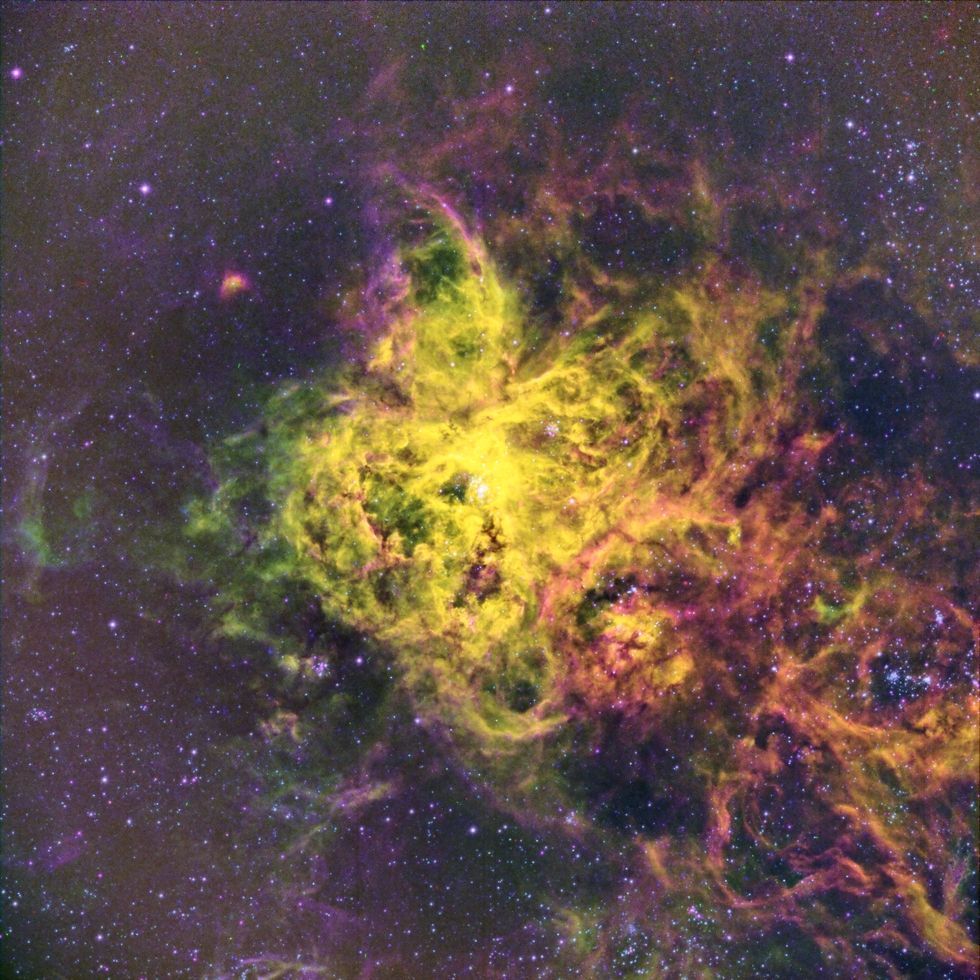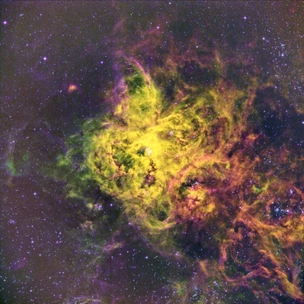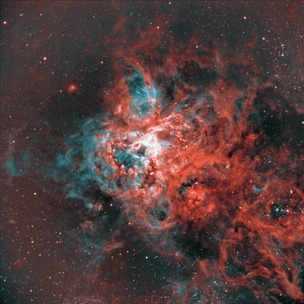Tarantula Nebula One Click Shot
0
3
Tarantula Nebula One Click Shot
Located in the Large Magellanic Cloud — a dwarf galaxy gravitationally bound to our Milky Way galaxy — the Tarantula Nebula is a hotbed of star formation. In the case of the Large Magellanic Cloud, such studies have helped scientists learn about rates of star formation in galaxies other than the Milky Way.
The nebula also hosts R136, a "starburst" region, where massive stars form in extremely close proximity and at a rate far higher than in the rest of the galaxy. Within R136, in an area less than 1 light-year across (about 6 trillion miles, or 9 trillion kilometers), there are more than 40 massive stars, each containing at least 50 times the mass of our Sun. By contrast, there are no stars at all within 1 light-year of our Sun. Similar starburst regions have been found in other galaxies, containing dozens of massive stars — a higher number of massive stars than what is typically found in the rest of their host galaxies. How these starburst regions arise remains a mystery.
The nebula also hosts R136, a "starburst" region, where massive stars form in extremely close proximity and at a rate far higher than in the rest of the galaxy. Within R136, in an area less than 1 light-year across (about 6 trillion miles, or 9 trillion kilometers), there are more than 40 massive stars, each containing at least 50 times the mass of our Sun. By contrast, there are no stars at all within 1 light-year of our Sun. Similar starburst regions have been found in other galaxies, containing dozens of massive stars — a higher number of massive stars than what is typically found in the rest of their host galaxies. How these starburst regions arise remains a mystery.
SPECIFICATIONS
Telescope
CHI-1
Camera
FLI PL 9000
Location
Rio Hurtado Valley, Chile
Date of observation
2020-12-05
Filters
Halpha, SII, OIII
Processing
2X300s Halpha, 2X300s OIII, 2X300s SII aligned, integreted and comined then edited all in pixinsight.




